Ditapis dengan
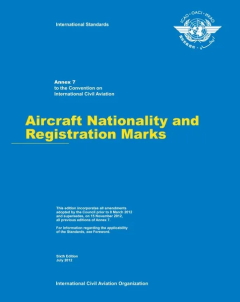
ANNEX 7 Aircraft Nationality and Registration Mark
Annex 7 contains Standards adopted by the International Civil Aviation Organization as the minimum Standards for the display of marks to indicate appropriate nationality and registration which have been determined to comply with Article 20 of the Convention. Standards for Aircraft Nationality and Registration Marks were first adopted by the Council on 8 February 1949 pursuant to the provisions …
- Edisi
- -
- ISBN/ISSN
- ANN-00007-006-01
- Deskripsi Fisik
- -
- Judul Seri
- -
- No. Panggil
- 629.130 2 INT a
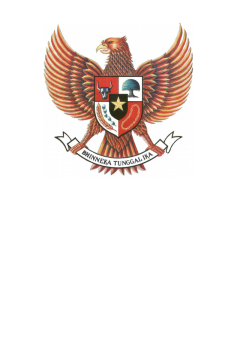
Cetak CASR (Civil Aviation Safety Regulation) − Part 33 Airworthiness Stand…
Part 33 of CASR was developed to specify the airworthiness standards for aircraft engines. The airworthiness standards for aircraft engines were in Australian Civil Aviation Order (CAO) Part 102. Part 33 has been based on foreign legislation, specifically the USA's Federal Aviation Regulations Part 33.
- Edisi
- -
- ISBN/ISSN
- -
- Deskripsi Fisik
- -
- Judul Seri
- -
- No. Panggil
- 629.134 35 MIN a
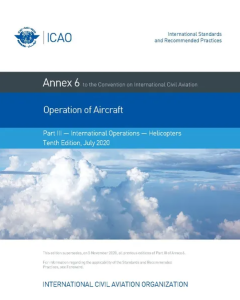
ANNEX 6 Operation of Aircraft
The Standards and Recommended Practices contained in Annex 6, Part III, shall be applicable to all helicopters engaged in international commercial air transport operations or in international general aviation operations, except that these Standards and Recommended Practices are not applicable to helicopters engaged in aerial work
- Edisi
- -
- ISBN/ISSN
- ANN-00006-010-03
- Deskripsi Fisik
- -
- Judul Seri
- -
- No. Panggil
- 629.132 52 INT o

Cetak CASR (Civil Aviation Safety Regulation) − Part 29 Airworthiness Stand…
- Edisi
- -
- ISBN/ISSN
- -
- Deskripsi Fisik
- -
- Judul Seri
- -
- No. Panggil
- 629.133 352 MIN a
- Edisi
- -
- ISBN/ISSN
- -
- Deskripsi Fisik
- -
- Judul Seri
- -
- No. Panggil
- 629.133 352 MIN a
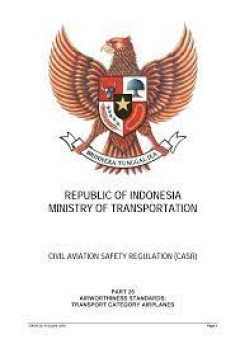
Cetak CASR (Civil Aviation Safety Regulation) − Part 25 Airworthiness Stand…
CASR Part 25 was developed to specify the airworthiness standards for transport category aeroplanes.
- Edisi
- -
- ISBN/ISSN
- -
- Deskripsi Fisik
- -
- Judul Seri
- -
- No. Panggil
- 629.132 3 MIN a
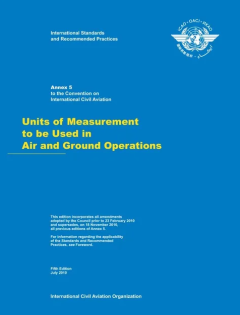
ANNEX 5 Units of measurement
This Annex comprises the Standards and Recommended Practices for dimensional units to be used in air and ground operations. The Annex deals with the standard application of units of measurement and termination of the use of non-SI units. Attachments to the Annex contain material describing the development of the International System of Units (SI) and guidance on the application of the SI, conve…
- Edisi
- -
- ISBN/ISSN
- ANN-00005-005-01
- Deskripsi Fisik
- -
- Judul Seri
- -
- No. Panggil
- 629.134 5 INT u
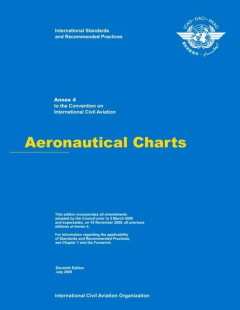
ANNEX 4 Aeronautical Chart
The Standards and Recommended Practices applicable to Aeronautical Charts
- Edisi
- -
- ISBN/ISSN
- ANN-00004-011-01
- Deskripsi Fisik
- -
- Judul Seri
- -
- No. Panggil
- 629.132 54 INT a

ANNEX 4 Aeronautical Chart
The Standards and Recommended Practices applicable to Aeronautical Charts
- Edisi
- -
- ISBN/ISSN
- ANN-00004-011-01
- Deskripsi Fisik
- -
- Judul Seri
- -
- No. Panggil
- 629.132 54 INT a
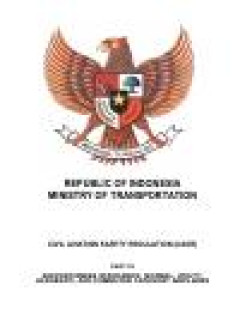
Cetak CASR (Civil Aviation Safety Regulation) − CASR Part 23 Airworthiness …
CASR Part 23 was developed to specify the airworthiness standards for small aeroplanes: Normal category aeroplanes - not intended for acrobatic operation, having up to 9 passenger seats and a maximum takeoff weight up to 5,700 kg. Utility category aeroplanes - intended for limited acrobatic operation, having up to 9 passenger seats and a maximum takeoff weight up to 5,700 kg. Acrobatic cat…
- Edisi
- -
- ISBN/ISSN
- -
- Deskripsi Fisik
- -
- Judul Seri
- -
- No. Panggil
- 629.132 3 MIN a
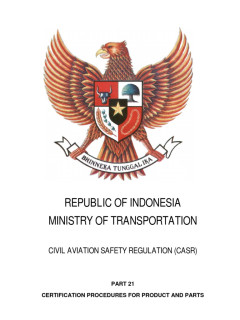
Cetak CASR (Civil Aviation Safety Regulation) − Part 21 Cert. Procedure for…
Part 21 of CASR deals with the certification and airworthiness requirements for aircraft and aircraft parts. It includes rules relating to Type Certificates, Type Acceptance Certificates, Supplemental Type Certificates, Production Certificates, Certificates of Airworthiness and export airworthiness approvals. It also covers the approval of aircraft engines, propellers, and certain materials and…
- Edisi
- -
- ISBN/ISSN
- -
- Deskripsi Fisik
- -
- Judul Seri
- -
- No. Panggil
- 629.130 2 MIN c

Cetak CASR (Civil Aviation Safety Regulation) Part 01 Definition & Abreviation
Part 1 of CASR 1998 provides a general explanation of the name, commencement date and structure of the CASR.
- Edisi
- -
- ISBN/ISSN
- -
- Deskripsi Fisik
- -
- Judul Seri
- -
- No. Panggil
- 629.130 1 MIN d
− ANNEX 3 Meteorology for International Air Navigation
- Edisi
- -
- ISBN/ISSN
- -
- Deskripsi Fisik
- -
- Judul Seri
- -
- No. Panggil
- 629.132 51 INTm
- Edisi
- -
- ISBN/ISSN
- -
- Deskripsi Fisik
- -
- Judul Seri
- -
- No. Panggil
- 629.132 51 INTm
Annex 2 - Rules Of The Air
The rules in Annex 2 consist of general rules, visual flight rules and instrument flight rules and apply without exception over the high seas and over national territories to the extent that they do not conflict with the rules of the State being overflown.
- Edisi
- -
- ISBN/ISSN
- ANN-00002-010-01
- Deskripsi Fisik
- -
- Judul Seri
- -
- No. Panggil
- 629.132 3 INT r
CASR Part 01 Definition & Abreviation
- Edisi
- -
- ISBN/ISSN
- -
- Deskripsi Fisik
- -
- Judul Seri
- -
- No. Panggil
- 629.130 2 INT p
- Edisi
- -
- ISBN/ISSN
- -
- Deskripsi Fisik
- -
- Judul Seri
- -
- No. Panggil
- 629.130 2 INT p

Theory of Plates
- Edisi
- -
- ISBN/ISSN
- -
- Deskripsi Fisik
- -
- Judul Seri
- -
- No. Panggil
- 624.17765 SUP t
- Edisi
- -
- ISBN/ISSN
- -
- Deskripsi Fisik
- -
- Judul Seri
- -
- No. Panggil
- 624.17765 SUP t
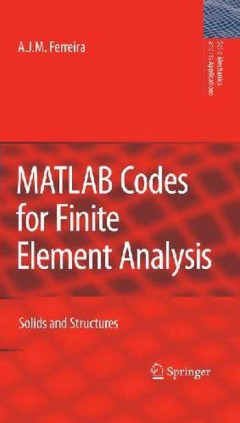
MATLAB Codes for Finite Element Analysis
MATLAB is a commercial software and a trademark of The MathWorks, Inc. USA. It is an integrated programming system, including graphical interfaces and a large number of specialized toolboxes. MATLAB is getting increasingly popular in all fields of science and engineering. This chapter will provide some basic notions needed for the understanding of the remainder of the book. A deeper study of MA…
- Edisi
- -
- ISBN/ISSN
- 978-1-4020-9199-5
- Deskripsi Fisik
- ix, 233 hlm
- Judul Seri
- -
- No. Panggil
- 624.1710151825 FER m
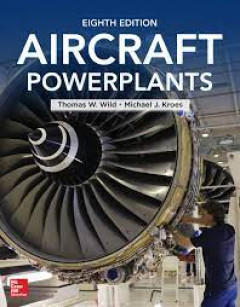
Aircraft powerplants
Aircraft Powerplants, Seventh Edition, part of the Glencoe Aviation Technology Series (formerly the Northrop Series), is the most comprehensive up-to-date powerplant book on the market today. It has been revised to reflect the latest changes in FAR Part 147 and changing industry needs. The new edition features expanded coverage of turbine engine theory and nomenclature. It also includes additi…
- Edisi
- 7
- ISBN/ISSN
- 978-0070047976
- Deskripsi Fisik
- 596 hlm
- Judul Seri
- -
- No. Panggil
- 629.13435 RAL a

Aircraft Structures for Engineering Students (Aerospace Engineering)
Aircraft Structures for Engineering Students, Fifth Edition, is the leading self-contained aircraft structures course text. It covers all fundamental subjects, including elasticity, structural analysis, airworthiness, and aeroelasticity. The author has revised and updated the text throughout and added new examples and exercises using Matlab. Additional worked examples make the text even more…
- Edisi
- -
- ISBN/ISSN
- 978-0080969053
- Deskripsi Fisik
- 864 hlm. ; 7.5 x 1.73 x 9.25 inch
- Judul Seri
- -
- No. Panggil
- 629.13431 MEG a
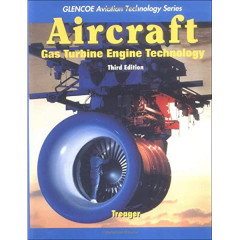
Aircraft Gas Turbine Engine Technology
Aircraft Gas Turbine Engine Technology provides a comprehensive, easy-to-understand treatment of the background, development, and applications of the gas turbine engine it its various forms, such as turobjet, turbofan, turboprop, and turboshaft powerplants. Designed primarily as a resource for technicians preparing for the FAA aircraft powerplant mechanic certification, Aircraft Gas Turbine Eng…
- Edisi
- -
- ISBN/ISSN
- 978-0028018287
- Deskripsi Fisik
- 688 hlm. ; 8.4 x 1.2 x 10.7 inch
- Judul Seri
- -
- No. Panggil
- 629.134353 TRE a

Aircraft Structures for Engineering Students (Aerospace Engineering): 6th Edi…
Aircraft Structures for Engineering Students, Sixth Edition, is the leading self contained aircraft structures course text. It covers all fundamental subjects, including elasticity, structural analysis, airworthiness and aeroelasticity. Now in its sixth edition, the author has expanded the book’s coverage of analysis and design of composite materials for use in aircraft, and has added new, re…
- Edisi
- 6
- ISBN/ISSN
- 978-0081009147
- Deskripsi Fisik
- 910 p. ; 7.5 x 1.8 x 9.25 inc.
- Judul Seri
- -
- No. Panggil
- 629.13431 MEG a
 Karya Umum
Karya Umum  Filsafat
Filsafat  Agama
Agama  Ilmu-ilmu Sosial
Ilmu-ilmu Sosial  Bahasa
Bahasa  Ilmu-ilmu Murni
Ilmu-ilmu Murni  Ilmu-ilmu Terapan
Ilmu-ilmu Terapan  Kesenian, Hiburan, dan Olahraga
Kesenian, Hiburan, dan Olahraga  Kesusastraan
Kesusastraan  Geografi dan Sejarah
Geografi dan Sejarah